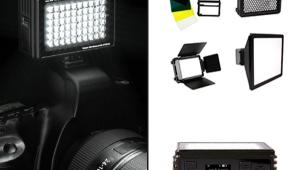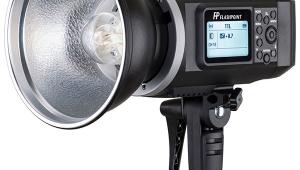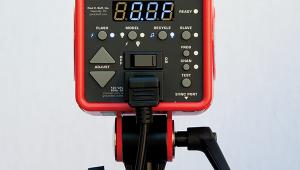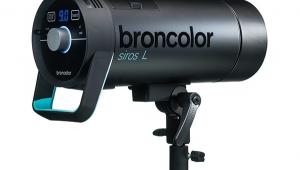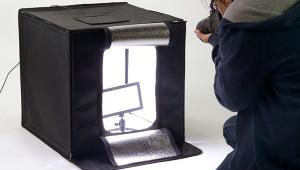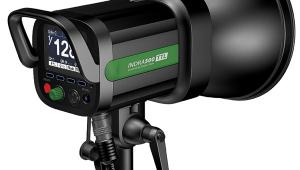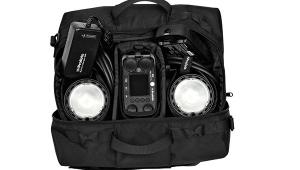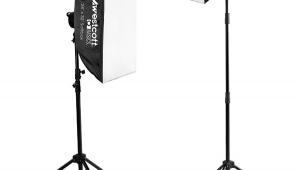Rotolight NEO Review: Does a New LED Lighting Tool Provide a “Goldilocks” Solution?

LED lighting is all the rage with the cool kids and why not? It’s continuous and that’s important for new photographers or anyone wishing to capture hybrid—video and still—imagery. It’s also literally cool, with no eyebrow-melting hot lights making subjects uncomfortable.
In the not-so-distant past, the biggest problem was that LEDs weren’t all that bright and color balance could be tricky for shooters new to LED lighting. It’s these final two pieces of the puzzle that’s seemingly solved by Rotolight’s NEO.

Build And Features
In Rotolight’s product lineup, NEO comfortably fits between the compact RL48 and the big kahuna Anova, offering a “Goldilocks” solution by happily blending features of each light while adding a few new ones. NEO delivers 1077 lux at three feet and is slightly larger (5.7-inch diameter vs. 5.3) than the RL48 that produces 242 lux. The new light contains 120 LEDs with a 50-degree beam angle and since Rotolight’s LEDs ensure against Wave Pulse Modulation, there’s no output-robbing flicker.
NEO appears solidly built with more on-board electronics, weighing in at 12.5 ounces compared to the RL48’s six ounces. It requires six AA cells compared to the RL48’s three or you can use an AC adapter or D-Tap power cable, something the RL48 does not offer.
Batteries give three hours of continuous use at 100 percent power (longer with lower power levels) and I prefer to use NEO that way because there are fewer cords for me to trip over. The rear display can be turned off or dimmed, providing additional run time when using batteries.
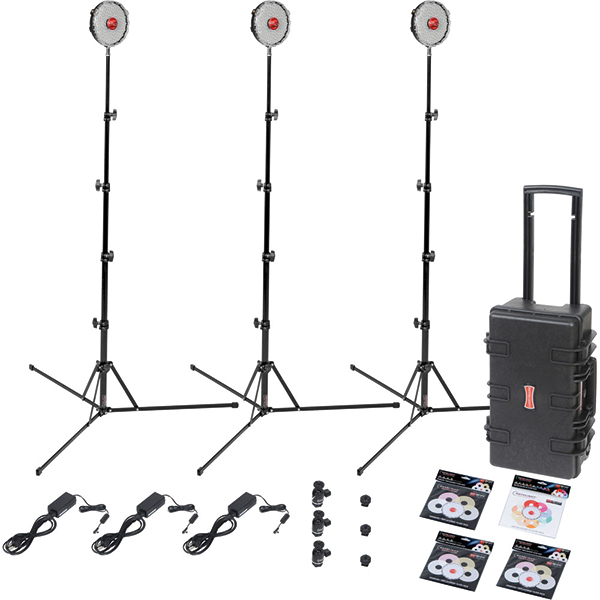

Photos © Joe Farace
NEO has an overall Color Rendering Index of 95 with a skin tone reproduction rating of 99—out of 100. Color temperature is adjustable using a rear-mounted rotary knob from 3150 to 6300K in 10-degree steps. Brightness is adjustable from 1 to 100 percent in 1 percent steps while a Dynamic Drift Compensation driver built into NEO prevents color shifts during changes in brightness.
To calculate correct aperture, NEO uses the camera’s shutter speed, ISO, and distance to the subject along with data from the light itself. As you adjust the distance from your subject or the NEO’s brightness, you re-enter the relevant settings into NEO and it displays the updated recommended aperture.
In the “now for something completely different” department, for video and hybrid shooters NEO offers SFX Mode, featuring a menu of special lighting effects where you can also control brightness. Effects include: Strobe light, from a slower to a faster strobing effect; TV for a random flicker, mimicking the effect of a subject watching television; Police car’s rooftop lights; Fire, from candle to campfire to all-out blaze; Lightning and others, including Cycle and Throb. You can even program a 12-second repeatable fade up or down command. NEO’s firmware can be updated using a port in the battery compartment.
Rotolight’s NEO 3 Light Kit ($1,698) includes three NEOs with a Lee Color FX filter pack, three Lee standard filter packs, three shoe to 1/4-inch studs adapter, three ball heads, and three seven-foot light stands all packed into a waterproof Pelican-style rolling case. The standard filter pack contains #216 and #250 Diffusion, #184 Cosmetic Peach, and #279 Minus Green filters. Color FX filters are Hollywood Frost (#255), Straw (#103), Rust (#777), Medium Blue-Green (#116), Bright Pink (#128), Moroccan Frost (#791), Mist Blue (#061), Bedford Blue (#712), Light Red (#182), and, no kidding, Bastard Amber (#162).



In The Studio
NEO has a rubberized and rugged housing that provides additional protection in the studio or on location. For outdoor shoots, the light has an IP (Ingress Protection) rating of 23 and for extra rain protection, Portabrace offers a rain cover.
Set up is simple. Each NEO has a 1/4-20 threaded mounting hole with a 360-degree swivel shoe mount. I removed that and mounted the lights to the kit’s ball heads, making it easy to attach to Manfrotto Nano-like light stands. NEO has a Fast mode (pushing in, while turning) that allows you to make adjustments quicker but you might want to poke around with the controls until you get the hang of it. Initial testing in my home studio produced good results at a nominal ISO setting of 800 but this changed throughout the shoot based on lighting setup, filters, and lens used. Check captions for exposure data.
For this test I used Savage’s new printed background papers, which are available in 53-inch wide x 18-foot long rolls. They feature realistic backgrounds, including wood, brick, or bokeh, and appear printed on material a bit thicker than Savage’s seamless papers. I used them with Savage’s almost eight-feet-high Economy Stand that will support backgrounds up to 10-feet wide.
For this test, I wanted to experiment with different kinds of light modifiers and for the first series of shots with Savage’s Weathered Brick backdrop I used Chimera’s Octa 2, a 24-inch Collapsible Beauty Dish, to soften the main light. The other two lights were used as fill and backlight as shown in the setup illustration.
For the second setup, I replaced the beauty dish with a 33-inch translucent umbrella used in shoot-through mode to provide soft light. All of the lights were run off AA battery power, making moving the lights around my 11x15-foot studio a snap—no cords—especially when it was uncharacteristically crowded with five people. Battery power never once faltered and the lights remained on during the entire session.
Conclusion
The Rotolight NEO LED lighting system is in many ways a breakthrough system that may just herald in a new wave of lighting for portrait photography, including hybrid image making. The lights are simple to operate yet provide a wide range of complex and interesting possibilities. While not inexpensive, the three-light kit is turnkey, especially for photographers who don’t already own light stands and other studio accessories. For them, it’s a bargain.
(Acknowledgments: Many thanks to model Sarah Dean and photographer Cliff Lawson who was of immense assistance as well as inspiration when we were working together on these lighting setups with the NEOs.)
- Log in or register to post comments


